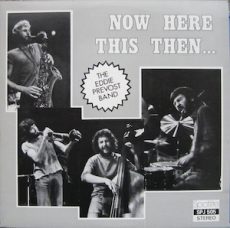
Daily Dose Of Jazz…
Edwin John Prévost was born June 22, 1942 in Hitchin, Hertfordshire, England of Huguenot heritage. Brought up by a single parent mother in war-damaged London Borough of Bermondsey. He won a state scholarship to Addey and Stanhope Grammar School, Deptford, London. Enrolled in the Boy Scouts Association’s 19th Bermondsey Troop to join the marching band and as a teenager began to get involved with the emerging youth culture music, first skiffle, then introduced to a big jazz record collection of a school friend with rich parents.
Prévost worked part-time after school, purchasing his first snare drum from the Len Hunt Drum Shop on Archer Street. Leaving school at 16, he took various clerical positions, while continuing his musical interests. Immersed in the music of bebop, his playing technique was insufficient, however, New Orleans trad jazz offered scope for his growing musical prowess.
He played in various bands mostly in the East End of London. It was during a tenure with one of these bands he met trumpeter David Ware, who shared a passion for hard-bop jazz. Together, while in their early twenties they formed a modern jazz quintet which included Lou Gare, who was a member of the Mike Westbrook Jazz Orchestra.
In 1965 AMM was co-founded by Eddie, Lou Gare, and Keith Rowe and were shortly joined by Lawrence Sheaff. All had a jazz background and were soon augmented by composer Cornelius Cardew. They stayed together until 1972 when some split and others took their place.
Over the years Prévost has conducted many improvised music workshops. However, as a result of a seminar he conducted at The Guelph Jazz Festival, Canada in 1999, Prévost began to formulate a framework for a workshop based upon a more thorough working of AMM principles and practice.
Percussionist Eddie Prévost, who has recorded twenty albums as a leader, twenty-eight with the free improvisation group AMM, and another thirty as a sideman with Derek Bailey, John Wolf Brennan, John Butcher, Cornelius Cardew, Chris Corsano, Sachiko M, Jim O’Rourke, Bruce Russell, David Sylvian, Telectu, Ken Vandermark, Alexander von Schlippenbach, Christian Wolff, Marilyn Crispell, continues to perform and record.
More Posts: bandleader,history,instrumental,jazz,music,percussion
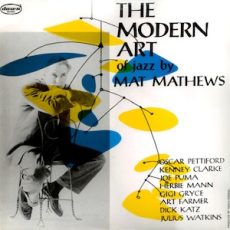
Daily Dose Of Jazz…
Mat Mathews was born Mathieu Hubert Wijnandts Schwarts on June 18, 1924 in The Hague, Netherlands and learned to play accordion while the country was still under the Nazi rule during World War II. It was after hearing Joe Mooney on a radio broadcast after the war that he decided to play jazz.
Moving to New York City in 1952, Mat formed a quartet which included Herbie Mann. He also worked and or recorded with Kenny Clarke, Art Farmer, Percy Heath, Carmen McRae, Oscar Pettiford, Joe Puma, Milt Jackson and Julius Watkins.
He worked mainly as a session musician in the late 1950s, and returned to the Netherlands in 1964, where he worked as an arranger, session musician, and record producer. In the 1970s, he again worked in the United States with Charlie Byrd, Doug Duke, Marian McPartland, and Clark Terry.
Accordionist, arranger, record producer Mat Mathews, who recorded eight albums as a leader, died on February 12, 2009 in Clarence Center, New York.
More Posts: accordion,arranger,bandleader,history,instrumental,jazz,music,record producer
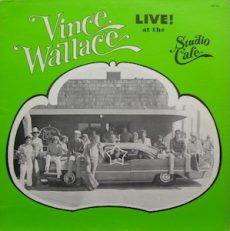
Daily Dose Of Jazz…
Vince Wallace was born on June 15, 1939 in Port Townsend, Washington. At just two months shy of his second birthday his mother moved him to San Joaquin Valley, California. After spending a little time there, they ended up settling and growing up in the Bay area of Oakland, California.
His earliest recordings were on the Black Jack Wayne label in 1953 with Screamin Mel Dorsey and Chuck Wayne and the Heartbeats. These sessions were along with his original instrumental, Funky. He performed regularly at this time at the Country and Western halls and go go bars of Niles, California alongside Rose Maddox, Johnny Cash, and the Black Brothers.
As he developed, he became more sought after at all hours jazz joints where he sat in with Eric Dolphy, Paul Chambers, Charles Mingus, Pony Poindexter, Art Blakey and Smiley Winters. Jimbo’s Bop City in San Francisco was the best place around, where every night after 2 a.m. another legend of the jazz would come through the door.
In 1958 Vince moved to Southern California where he picked up work with Paul Bley and Marvin Rainwater. His Sunday jam session at The Cascades Club in Belmont Shores, helped the emergence of Kent Glenn, Mark Proctor, Gene Stone, and Warren Gale. By 1966 was back in the Bay Area working with alto saxophonist Norman Williams at the JukeBox in San Francisco. Through 1970 Wallace recorded three albums with Little John, a fusion rock band on Epic records.
Drawn back to southern California he experienced some of his widest recognition as his featured performances were reviewed favorably by Gerald Wilson.. This led to an eventual run at the Studio Cafe, and the release of two of Vince’s solo albums on Amp Records. Returning to San Francisco he led a Sunday night jam session through the Nineties, receiving the San Francisco Bay Guardian Award for Best Jam Session in 1995.
With a surge of interest in his music in the new millenium, he started working at the Bulldog Coffee Shop in Oakland and reuniting with Bishop Norman Williams, Prince Lasha, Jim Grantham, Steve Heckman, Fred Randolph, Chuck Thomposon, Chris Amberger, Terry Rodriguez, and John Gilmore, just to name a few. He began working on his memoirs, created a website, took a Friday residency at Cafe Van Kleef, appeared on KCSM 91.1 FM, and recorded a new album with Larry Vuckovich.
Tenor saxophonist Vince Wallace has reestablished himself as one of the most sought after saxophonists around and his music will undoubtably be spread throughout the world via his website www.vincewallace.com.
More Posts: bandleader,history,instrumental,jazz,music,saxophone
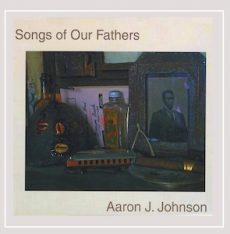
Daily Dose Of Jazz…
Aaron J. Johnson was born in Washington, D.C. on June 10, 1958. He studied piano and drums before taking up the trombone at age 12. While in high school he frequently performed with area funk bands but also conducted and arranged for student ensembles under the direction of noted trumpeter Peter D. Ford. It was Ford who gave him his first professional gigs and introduced him to Ellington alumni, bandleader and alto saxophonist Rick Henderson.
Although pursuing degrees in electrical engineering, Johnson remained active as a trombonist and bass trombonist throughout his college years. He had the good fortune to play with the University of Pittsburgh Jazz Ensemble under the direction of Kenny Clarke and Nathan Davis. Following college Aaron continued gigging around D.C. and the New York area, studying privately with reed multi-instrumentalist Makanda Ken McIntyre.
By the early 1990s Johnson established himself as an experienced and valuable sideman, composer and arranger. He has since recorded and performed with a multitude of major artists and ensembles to include Reggie Workman, Jimmy Heath, Charles Tolliver, Oliver Lake, Muhal Richard Abrams, Bill Lee, Frank Lacy, The Mingus Big Band, the Count Basie Orchestra, Steve Turre’s Sanctified Shells, the Lincoln Center Jazz Orchestra and the Smithsonian Jazz Masterworks Orchestra.
He has received the New Jersey State Council Fellowship in Music Composition (2000) Aaron Johnson has composed and arranged works performed or recorded by Frank Foster, Steve Turre, Frank Lacy, the Nancie Banks Orchestra, and Paradigm Shift. He has been featured in film scores, television commercials and public radio broadcasts.
Trombonist Aaron Johnson is currently in Columbia University’s Musicology doctorate program and has released his debut album Songs Of Our Fathers and continues to perform.
More Posts: bandleader,history,instrumental,jazz,music,trombone
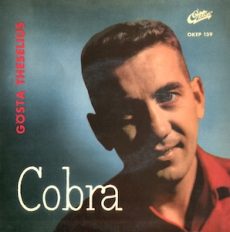
Daily Dose Of Jazz…
Gösta Theselius (was born June 9, 1922 in Stockholm, Sweden and was the younger brother of musician Hans Theselius.
He worked in the 1940s with a number of European big bands, including those of Thore Jederby, Hakan von Eichwald, Sam Samson, Lulle Elboj, and Thore Ehrling.
He played jazz into the 1950s, both as a saxophonist and a pianist. The latter instrument with Benny Bailey, Arne Domnerus, James Moody, and Charlie Parker, and composed copiously for film in the 1950s and 1960s.
Arranger, composer, film scorer, pianist and saxophonist Gösta Theselius died in Stockholm on January 24, 1976.
More Posts: arranger,bandleader,composer,film scorer,history,instrumental,jazz,music,piano,saxophone


